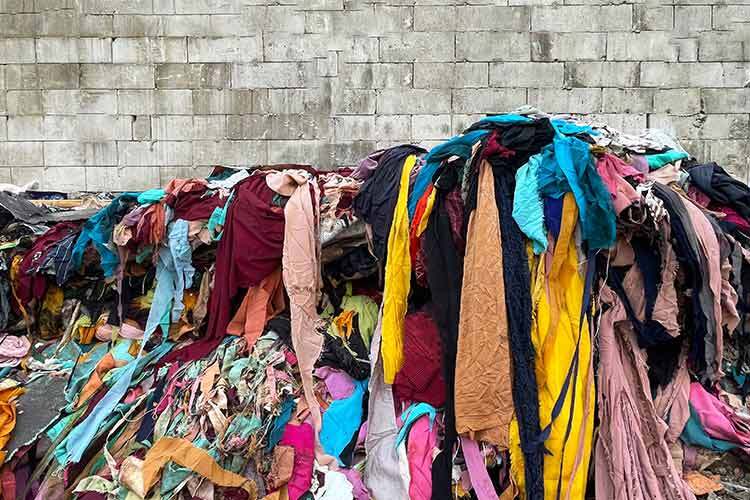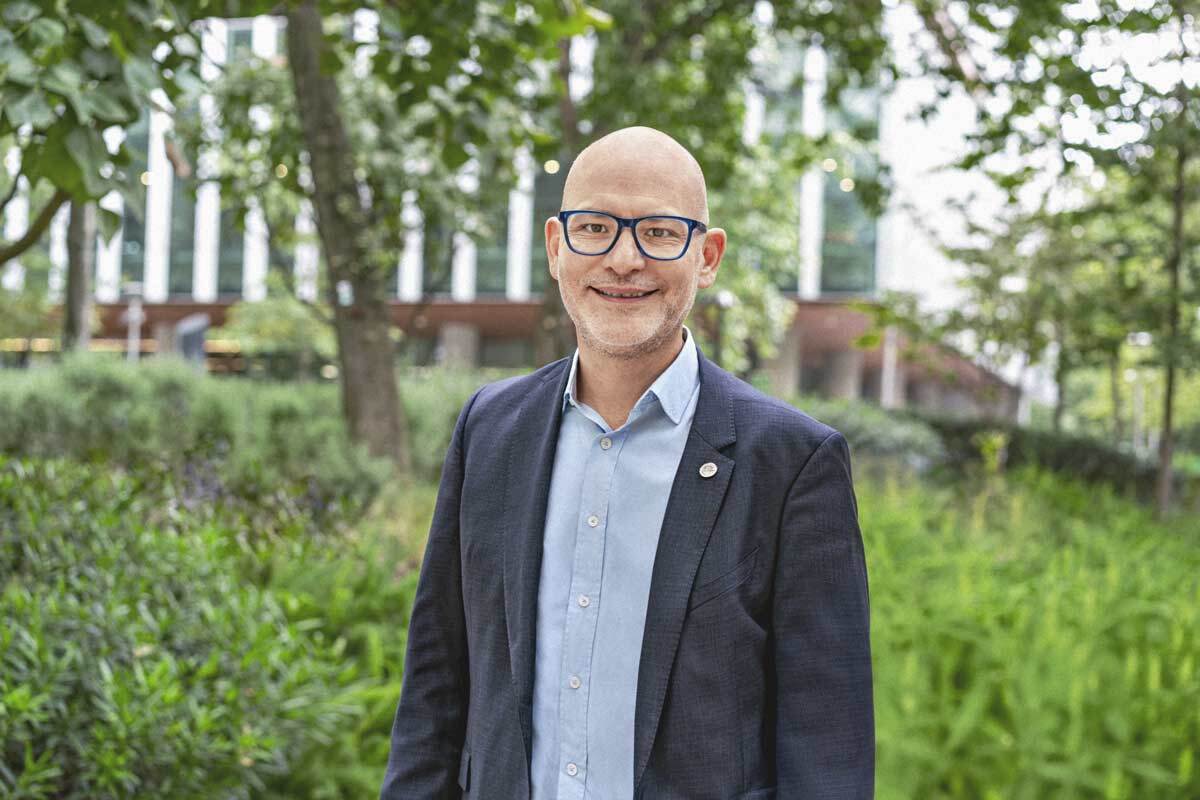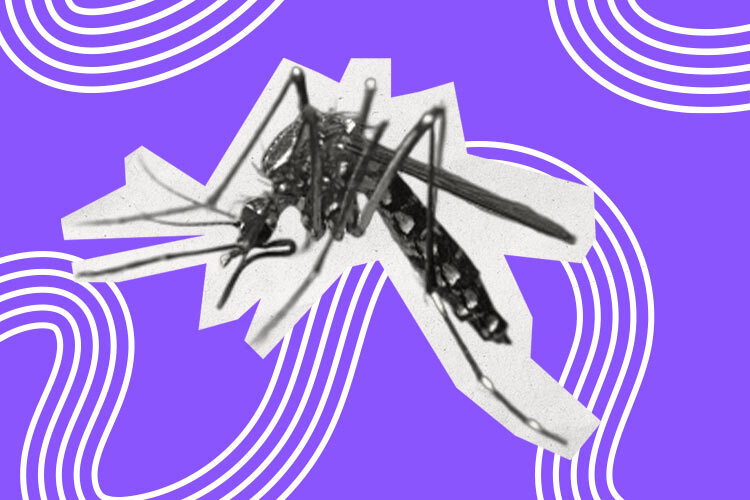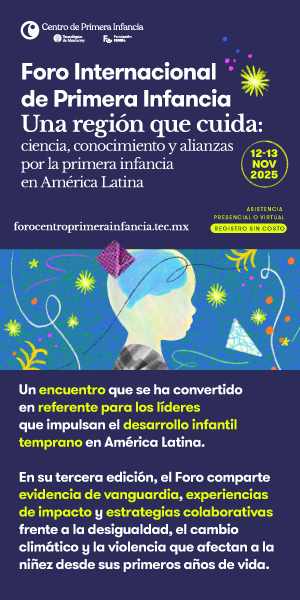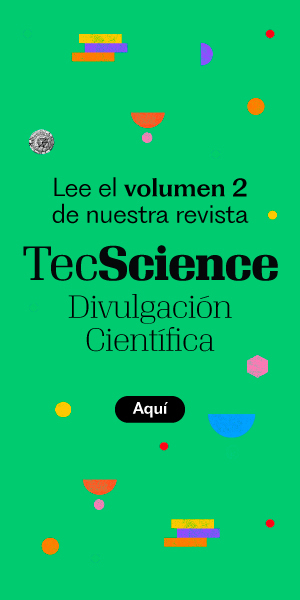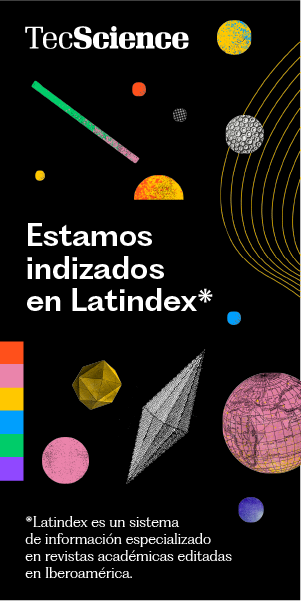Karla Avilés describes how the smell of burning plastic drifts all the way to her home. That odor comes from the Atacama Desert’s textile landfill in Chile, where clothes and other waste are set ablaze. She lives just a seven-minute walk from one of several dumpsites in Alto Hospicio, a commune near Iquique.
At least 124,000 tons of clothing enter the region’s port each year—as recorded in 2022—yet the city lacks adequate waste-disposal infrastructure. More importantly, this textile dumping has been going on for 20 to 30 years—virtually since Karla was born—and only now is a recycling plant being installed.
“But that doesn’t stop junk clothes from continuing to flood our territory—clothes that won’t sell, that are torn,” Karla explains. “At least now people are aware: they see those trucks dumping trash and say, ‘Hey, they’re burning clothes.’”
In 2022, satellite images revealed mounds of discarded textiles, some standing five to six meters high. That June, one of the region’s largest waste fires broke out. Although the landscape looks different now, the problem hasn’t gone away.
What is Fast Fashion?
Over the past 20 years, clothing consumption in Chile has skyrocketed by 233%, jumping from an average of 15 garments per person in 2007 to 50 in 2021—comparable to the U.S. (53 items) and higher than the U.K. (33 items), according to the 2025 “Hacia Basura Cero en los Textiles” (Toward Zero Textiles Waste) report from Fundación Reverdesierto.
At the same time, the Oxford Economics report Socioeconomic Impact of Second-Hand Clothes found that since 2002—and at least until 2017—we’ve been wearing new clothing 36% less than before.
The rise in consumption and disposal dates back to the 2000s, when Inditex kicked its sales machine into high gear: Zara was opening up to three new stores a day and was using real-time supply-chain tracking technology. The term fast fashion was coined in 1989 by New York Times journalist Anne Marie Schiro, describing Zara’s operation for the first time outside Europe. A Zara spokesperson revealed it took just fifteen days to transform a collection idea into a store display.
“A fashion company used to make four collections a year—one per season. Zara broke that cycle by creating a model where new items hit stores in just three weeks after conception,” says Andreas Hartmann, research professor at the Business School in the Department of International Business and coordinator of the Organizational Strategy Research Group at Tecnológico de Monterrey.
Today, fast fashion is defined by synthetic fibers used for cost-efficiency, luxury design knock-offs, cheap outsourced labor in East Asia, and accelerated product cycles.
This spawned ultra fast fashion, which can release as many as 10,000 new styles per day, driven by massive online sales and aggressive social media strategies. “In the industry, you hear that money matters more than talent or labor rights—that’s the system talking,” reflects María Pilar Uribe Silva, a journalist specializing in sustainable fashion. “The big issue today is overproduction of clothing born out of this relentless pace and the pressure for something new every day.”
The number of garments produced annually has doubled since 2000, according to the 2018 report by the international consultancy McKinsey. Besides buying more and more, users discard the pieces they buy at a cheap price faster, throwing them away after at least seven or eight uses. However, the clothing that ends up in landfills, whether discarded by users or by companies that didn’t sell the surplus, goes through other processes.
General textile waste disposal is divided into three main groups: reusable clothing for the secondhand market, recyclable material for industrial uses, and waste that is incinerated. The third group is the largest, since the infrastructure for collection, sorting, and processing of used textiles is underdeveloped even in advanced economies, unlike other sectors such as construction, where the cement industry has resources for waste processing and recycling.
This lack causes the equivalent of a truckload of clothes to end up in the trash every second, as less than 1% of textiles are recycled, according to the Ellen MacArthur Foundation and the UK Parliament. On the other hand, the clothes that are rescued do get a second life.
Secondhand clothing: the growing market
The secondhand industry in the European Union was valued at 16 billion euros in 2021 and is expected to nearly double by 2025, according to Statista.
Karla Avilés in Iquique, together with Bastián Barría and Ángela Astudillo, organized themselves and formed the NGO Desierto Vestido. In Atacama, they collected garments in perfect condition, identified, sorted, and after sanitizing them, put them up for “symbolic sale.”
Levi’s pants, Calvin Klein, Nike shorts, Adidas, Zara, and more were offered to the public for zero pesos, with consumers only having to pay for shipping. Their campaign was a success since in less than five hours all the garments were gone.
“Beyond the garment, we believe that taking these pieces to different parts of the world represents a more symbolic value associated with identity. People aren’t just buying a garment, but they’re taking a story with them, raising awareness about a problem happening here,” Bastián said in an interview.
The secondhand industry considerably reduces the ecological footprint of garments, as reused textiles require only 0.01% of the water and save about three kilograms of carbon dioxide per garment compared to new clothing production, according to the Oxford Economics report.
Secondhand platform companies seem to be a partial solution that also involves consumers who do not have as much influence over the production chain, Hartmann comments.
The academic and the professors from the marketing and business intelligence department at EGADE Business School, María Lucila Osorio and Diana Kolbe, made the report Secondhand Platforms, where they explore factors that affect their adoption.
In other countries, like the UK, 67% of millennials buy secondhand clothing, and Generation Z has two secondhand items in their closet for every five items, according to the retailer in that sector, Thred-Up. The platform study in Mexico showed that 67% also said they had bought some secondhand fashion product in the last year, representing approximately 40% of their purchases.
Both new and used clothing seem valuable to the consulted buyers in the sample, since they feel similar satisfaction with both. The three main reasons they choose to buy used clothing are: to save money, to feel they are making a good investment, and to take care of the planet. Also, they like having access to different or more exclusive garments.
“The customer also enjoys the game of searching for a hidden treasure, finding something very special in that shopping experience, so that is part of the appeal,” says Hartmann.
Secondhand clothing consumers said their main purchasing channel was physical locations such as markets, flea markets, or temporary bazaars (78%). Online, Facebook and Instagram dominate (39%), while 15% said they used specialized platforms such as Gotrendier, Gloset, Vopero, Troquer, The Real Real, Portelo, and Verde Permuta.
Troquer, a pioneering Mexican platform
One of these Mexican secondhand clothing platforms, Troquer, has been operating for 11 years selling luxury brand garments with prices starting at 350 pesos. Lucía Martínez-Ostos, COO and co-founder of the business, and Ytzia Belausteguigoiti, say that for many similar pages, with principles of selling “pre-loved” clothing, it has been difficult to be profitable.
“I thought, how can we make everyone keep feeling excitement constantly about what they wear without damaging the planet? Secondhand is perfect,” Martínez-Ostos said in an interview.
She also admits that an obstacle for secondhand businesses can be that consumers want everything instantly. Meanwhile, the processes Troquer manages — selection and curation of garments, taking photographs, writing descriptions, warehousing, posting on the site, and selling — can be challenging when competing with massive retailers.
The positive perception from the report carried out with a sample of participants in Mexico clearly shows that there is willingness to buy secondhand fashion motivated by it being a sustainable practice, since participants highlighted its impact on protecting the environment. “Our sample shows a high degree of awareness regarding the environmental impacts of the textile industry,” the document states.
“I would like users to try being 100% circular for at least a year, as a challenge,” Martínez-Ostos says explaining that Troquer has the facility to do so. You sell secondhand garments, receive payment as credit on the platform, and choose another garment from the same wide and varied catalog. “Then that virtuous circle continues.”
However, according to the report, the frequency of platform use is low. One of the main reasons is that products tend to be more expensive than in traditional channels like flea markets, bazaars, and markets, plus having to pay additional shipping costs.
How to Improve the Secondhand Business Model
Regarding this, Hartmann and Osorio proposed some improvements for digital platforms to operate with greater customer appeal, such as:
- Thinking of different ways to present attractive pricing.
- Using artificial intelligence applications to reduce costs and speed up the inspection or listing process for garments.
- Seeking reliable delivery options to customers through services like Rappi and Uber Eats.
- Specializing in a very narrow niche, such as children’s clothing, specific accessories, or plus-size apparel.
- Partnering with other brands to strengthen the distribution chain; as an example, they mentioned Troquer’s alliance with the department store Liverpool.
Although future trend forecasts by consulting firm McKinsey show that buyers are not very willing to pay more for sustainable products, they are aware of the climate crisis. More importantly, this crisis could impact fashion industry processes and eventually consumer behavior.
Meanwhile, their report The State of Fashion 2025 urges companies to prioritize long-term measures regarding their environmental impact. “Those who decide to tackle it with a long-term vision, even while facing immediate challenges, will be rewarded with more efficient operations and a competitive advantage.”
On its part, the European Union implemented policies starting in 2025 such as “the polluter pays,” a measure that ensures producers bear the costs associated with waste disposal. They also have special containers to collect secondhand clothing and collection centers for sorting and disposal. Another idea is the digital product passport, which would tell companies where what they produce ends up.
“I believe brands have a fundamental responsibility above all because they are the ones making the money,” Pilar reminded us.
Finally, Karla Avilés also recalls that as consumers, there is a long way to go: making informed purchases, reading labels about materials so that clothes last longer.
“It’s our money, and we earn it through the time we spend working, so we have to make it count.”
Did you find this story interesting? Would you like to publish it? Contact our content editor to learn more at marianaleonm@tec.mx
